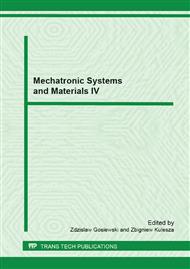p.165
p.171
p.176
p.182
p.188
p.194
p.200
p.206
p.220
Development of a Model for the Intake Channel within a MRCA Turbine Engine in Order to Analyze Intake Vortex Phenomena
Abstract:
Turbine engines need to produce the thrust from several to about one thousand kilograms of the air per second depending on the engine type. Due to the demand for such a significant amount of the air a unique three dimensional field of speed occurs in the area of the intake vicinity. The characteristic feature of this field, when the engine runs on the ground, is generation of an inlet stagnation line and a stagnation point. In case of the aircraft engines, a vortex is developed chiefly due to external disturbances e.g. because of crosswind gusts or a stream of engine exhaust from another aircraft. This may lead to serious damage of fan or compressor blades and, additionally, affect the stability of engine operation. This paper addresses selected issues related to development of a model for a turbine engine intake, describes the course of modeling procedures for both the engine intake and its vicinity and selection of boundary conditions as well as the solution algorithm that involves the numerical analysis of the intake vortex formation. The purpose of the analyses performed was to define how variations of the engine speed, the angle and direction of wind gusts affect formation of the intake vortex.
Info:
Periodical:
Pages:
188-193
Citation:
Online since:
March 2013
Authors:
Price:
Сopyright:
© 2013 Trans Tech Publications Ltd. All Rights Reserved
Share:
Citation:


